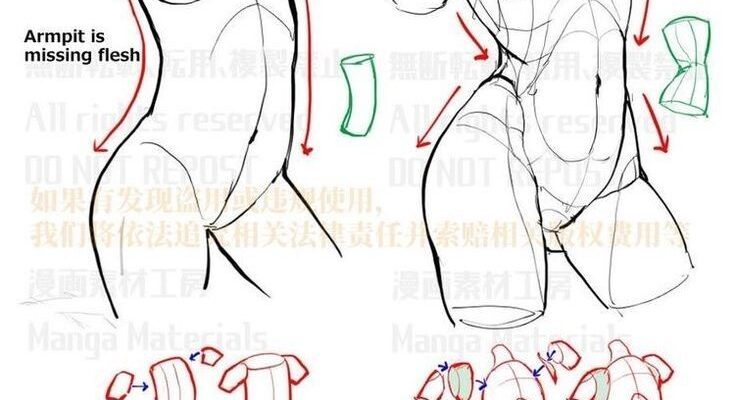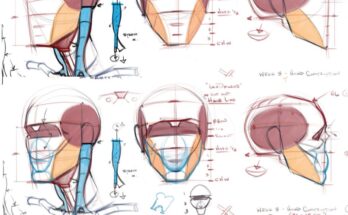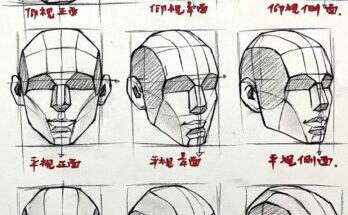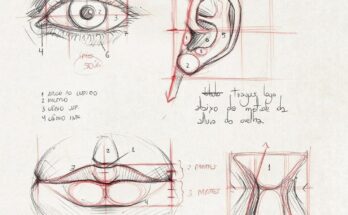Step-by-Step Tutorial on Drawing a Vibrant Tropical Bird: Anatomy, Plumage, and Color Dynamics for Wildlife Illustration

Mastering the art of drawing a vibrant tropical bird offers artists a chance to explore the intricate beauty of wildlife, blending detailed anatomy with vivid coloration to create captivating illustrations. This comprehensive tutorial is inspired by a reference sketch titled “Tropical Bird,” which depicts a colorful parrot-like bird perched on a branch, rendered in pencil with light shading and red construction lines to guide its pose and feather structure. The image showcases a dynamic stance with the bird’s head turned slightly, its wings folded neatly, and its tail fanned out, revealing a spectrum of feathers in hues suggested by annotations. Key features include a curved beak, expressive eyes, and textured plumage, with a faint jungle background adding context. The composition balances realism with artistic flair, making it an excellent foundation for wildlife art, ornithological studies, or vibrant digital designs.
This guide is tailored for intermediate artists, whether working traditionally with graphite on textured paper or digitally using tools like Procreate, Photoshop, or Corel Painter, where layers can manage base sketches, colors, and effects. We’ll break it down into sections based on the reference: establishing the pose and anatomy, detailing plumage and texture, refining the beak and eyes, and adding environmental context. Key techniques include using gesture lines for natural posture, layering feather patterns for depth, and applying color gradients for vibrancy. This approach suits nature journals, children’s book illustrations, or game environments, encouraging reference from real parrot species (e.g., macaws, cockatoos) or tropical photography. Start with light sketching tools (e.g., H pencil or 20% opacity brush), a ruler for symmetry, and an eraser for adjustments, progressing to B pencils or opacity builds for shading. Given today’s date—07:11 AM EDT on Saturday, October 25, 2025—this tutorial aligns with a soft morning light setting, enhancing the bird’s vivid tones.
Section 1: Establishing the Pose and Anatomy (Red Construction Lines)
The reference’s red lines provide a structural framework, capturing the bird’s perching energy and balance.
- Mapping the Gesture Line: Begin with a flowing red line from the beak, curving through the neck, chest, and tail, ending with a slight upward flick of the tail feathers. The image shows a relaxed yet alert pose, with the head tilted right and the body angled downward on the branch. Draw this as a single, fluid stroke, about 2-3 head lengths long, to convey natural poise.
- Marking Joints and Axes: Place red circles at key joints—base of the neck, shoulders, elbows, hips, and tail base—scaling them to prominence (e.g., larger at shoulders for wing attachment). Add axes along limbs: wings fold inward with slight bends, legs grip the branch with a bent knee, and the tail fans outward. The reference’s side perspective suggests a viewer at eye level, so keep the horizon straight.
- Perspective and Balance: Use a one-point perspective with a vanishing point centrally aligned along the branch, converging lines toward the tail. Ensure weight shifts to the gripping legs, with the tail counterbalancing the head’s tilt. Tip: Observe a perched parrot video to mimic the stance. Common error: Over-straightening—keep lines organic. Exercise: Sketch 3 quick gestures of this pose (perched, preening, flying) using only red lines to build flexibility.
This step locks in the bird’s natural posture, preventing stiff or unbalanced forms.
Section 2: Detailing Plumage and Texture (Feather Structure)
The reference’s pencil work highlights the bird’s vibrant feathers, with texture adding depth and character.
- Anatomical Base: Sketch the head as a rounded triangle with a curved beak, the body as an oval tapering to the tail, and the legs as thin cylinders with clawed feet. The torso is compact, with the image’s shading suggesting a plump yet agile frame.
- Feather Placement: Draw overlapping feathers as curved, elongated ovals, starting at the chest and flowing backward. The reference shows denser feathers near the neck, fading to longer tail plumes. Use a staggered pattern—alternate rows for natural overlap—beginning with a centerline and radiating outward. Vary size: smaller on the head, larger on the tail.
- Texture Refinement: Add texture with light cross-hatching for feather barbs and short strokes for downy underlayers. The image’s annotations suggest color variation, so plan light from above-right with highlights on feather tips. Avoid mistake: Uniform feathers—introduce iridescence or worn edges for realism. Exercise: Detail a wing segment with feathers and texture, then replicate across the body.
This builds a believable, textured plumage, enhancing the bird’s tropical allure.
Section 3: Refining the Beak and Eyes (Facial Features)
The reference’s head details draw attention, with the beak and eyes as focal points.
- Beak Construction: Sketch the beak as a hooked, curved shape with a upper mandible overlapping the lower, adding a nostril near the base. The image shows a smooth texture, so use clean lines with a slight gradient for depth.
- Eye Detailing: Draw the eye as an almond shape with a dark pupil and a bright highlight, surrounded by a thin ring of color (e.g., yellow or red). The reference’s tilt suggests alertness, so angle the highlight toward the light source.
- Integration Tips: Align the beak with the head’s tilt, ensuring the eye follows the gaze direction. Common pitfall: Flat eyes—add a subtle shadow for roundness. Exercise: Draw the head with beak and eye, varying expressions (curious, aggressive).
These elements bring the bird’s personality to life.
Section 4: Adding Environmental Context and Final Touches
The reference’s faint jungle background and shading create a morning jungle scene, enhanced by 07:11 AM lighting.
- Environmental Context: Sketch a branch with rough bark lines, a leafy canopy above, and distant trees as overlapping shapes. The image suggests a tropical setting, so add broad leaves or vines. With 07:11 AM EDT lighting, use a warm golden wash for sunlight, casting shadows leftward.
- Shading and Highlights: Apply gradients on a Multiply layer—darkest under wings, tail folds, and belly; brightest on feather tops and beak tip. Use the above-right light source implied in the image, adding specular highlights (small white dots) on iridescent feathers for a glossy effect.
- Final Details: Add a dew drop on a leaf, faint bird calls as sketch lines, and a glint in the eye. The reference’s light shading hints at morning mist, so soften distant edges with a gray overlay (10-20% opacity).
- Critique and Adjustment: Erase guidelines, sign in a subtle corner (e.g., lower-right), and flip horizontally to check symmetry. Adjust shading if the bird blends into the background.
Additional Professional Tips for Mastery
- Tools and Materials: 2H for outlines, 4B for shading; digitally, use custom feather brushes. Reference parrot photos or tropical bird guides.
- Common Challenges: Feather overlap errors—practice on a grid. For lighting, study morning bird photos (e.g., 7-8 AM).
- Exercises and Resources: Daily: 20-minute bird head studies with color notes. Explore “The Laws Guide to Nature Drawing and Journaling” by John Muir Laws or online ornithology sites.
- Extensions: Add a mate, vary colors (e.g., blue, green), or depict a flock for a scene.
This tutorial harnesses the reference’s vibrancy, guiding you to create a stunning tropical bird. Practice regularly, and explore our related guides for wildlife variations or jungle settings!



